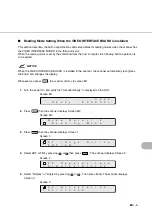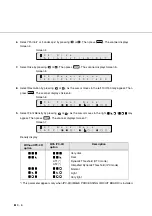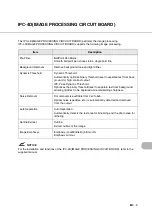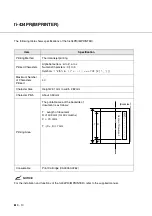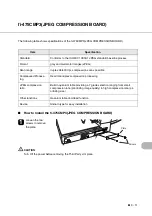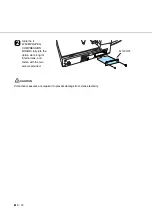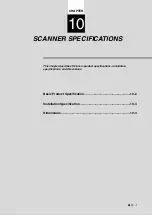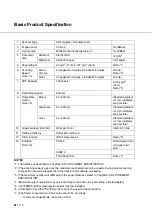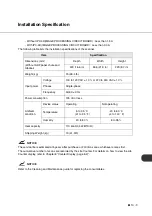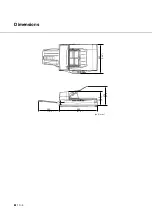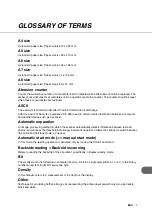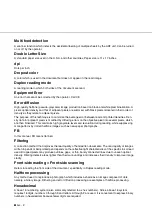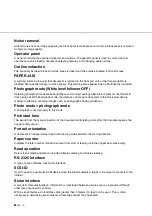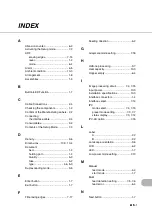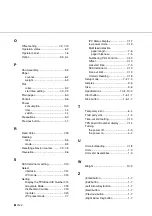
●
GL - 2
Multi feed detection
A scanner function which detects the accidental feeding of multiple sheets by the ADF unit. Can be turned
on or off by the operator.
Double Letter Size
A standard paper size used in the U.S.A. and other countries. Paper size is 11 x 17 inches.
dpi
Dots per inch.
Dropout color
A color which is used in the document but does not appear in the read image.
Duplex reading mode
A reading mode in which both sides of the document are read.
Equipment Error
An error that cannot be corrected by the operator. Call CE.
Error diffusion
High-quality halftone (pseudo-grayscale) image production based on black-and-white pixel binarization. A
pixel’s optical density and that of adjacent pixels are summed, with black pixels relocated in their order of
density as they relate to adjacent pixels.
The purpose of this technique is to minimize the average error between read and printed densities. Den-
sity data for adjacent pixels is modified by diffusing errors on the objective pixel into several pixels, which
are then binarized. This maintains high grayscale levels and resolution during reading, while suppressing
more patterns by dotted halftone images such as newspaper photographs.
FB
In this manual, FB means flat bed.
Filtering
A correction method that improves the read quality of handwritten documents. The read quality of images
written in pencil or ball-pointed pen depends on the reflective light characteristics of the specific ink or lead
used. Dropped pixels may produce outlines, gaps, or thin, barely connected lines due to uneven optical
density. Filtering detects areas lighter than their surroundings and increases their density to improve image
clarity.
Front-side reading = Front-side scanning
Refers to reading the front side of the document, specifically in Duplex reading mode.
Halftone processing
Any method used to reproduce a photograph which includes a shade as an image composed of dots,
namely, a binary image. Dithering and error diffusion processing are examples of halftone processing.
Hexadecimal
A base-16 numbering system (also commonly referred to as hex numbers). Since a base-16 system
requires 16 digits, numbers 0 through 9 and letters A through F are used. It is convenient to express binary
numbers in hexadecimal because fewer digits are required.
Summary of Contents for fi-4340C
Page 1: ...fi 4340C Image Scanner Operator s Guide ...
Page 2: ......
Page 20: ......
Page 25: ... 1 5 Assemblies Guide A ASSY Pick roller Stacker Pad ASSY ...
Page 28: ... 1 8 ...
Page 58: ... 5 10 ...
Page 86: ... 7 22 ...
Page 104: ... 10 4 423 16 6 360 14 2 556 21 9 220 8 7 275 10 8 unit mm Dimensions ...
Page 110: ... GL 6 ...
Page 113: ... IN 3 Send To button 1 7 Start button 1 7 Stop button 1 7 ...


